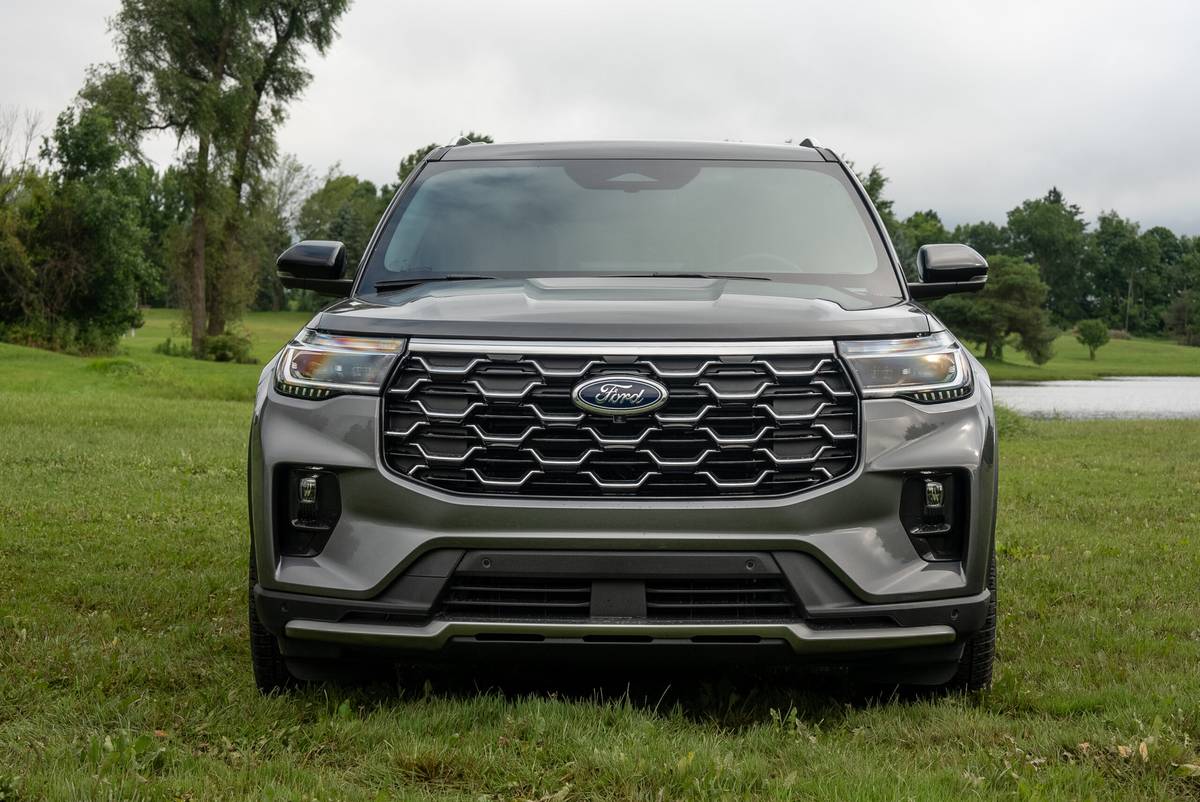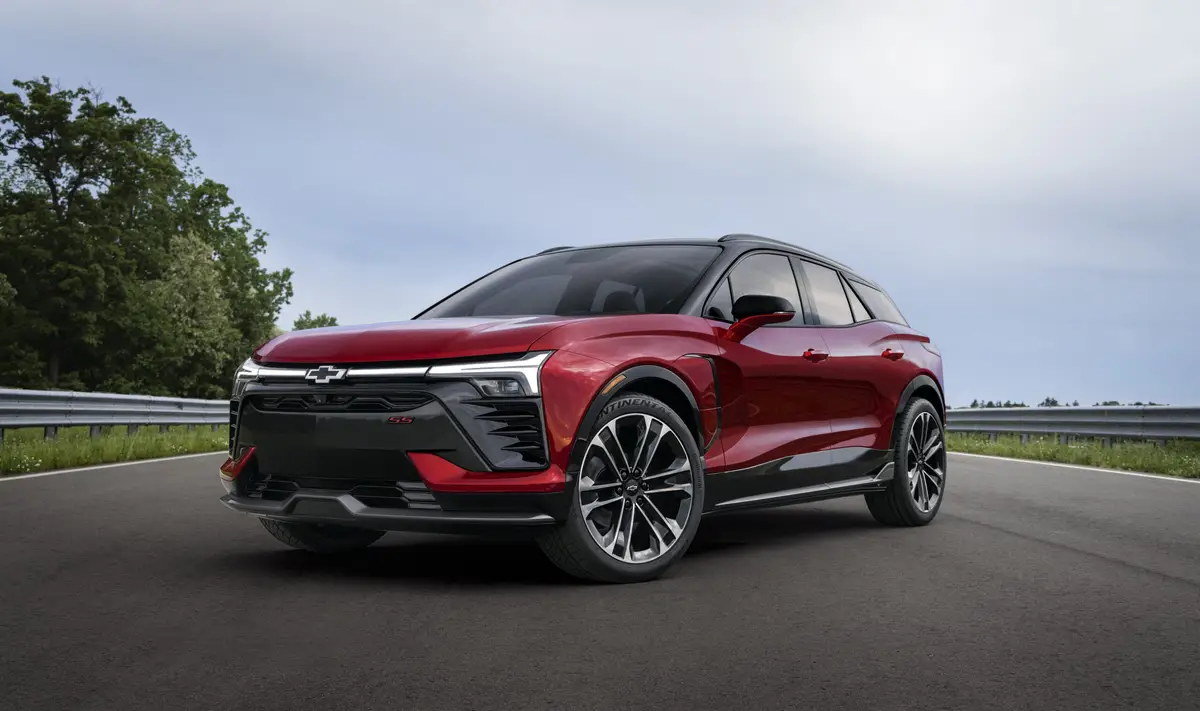2017 Chevrolet Colorado ZR2 Vs. 2017 Toyota Tacoma TRD Pro
We previously compared these two off-road pickup trucks — the 2017 Chevrolet Colorado ZR2 and 2017 Toyota Tacoma TRD Pro — based purely on their factory numbers. While that's one way of comparing them, the best way is to drive them. And what better way than in an off-road head-to-head test?
| 2017 Toyota Tacoma TRD Pro Photo Gallery
We put these two through the ringer, spending a few days in the mountains and deserts of Southern California in a variety of off-road environments that included rock crawling, hill climbs and high-speed dirt runs through dry riverbeds and more.
We scored each truck in nine distinct categories, each worth a maximum of 10 points. We did not weight these categories, and four of the nine were off-road focused.
If you're interested in how the new ZR2 fared as a daily driver and how fuel efficient it is, keep an eye out for a follow-up story.
But for now, let's jump right in to the head-to-head.
Powertrain
Winner: Tacoma TRD Pro (by a nose)
Both trucks offered a different approach. The TRD Pro has only one engine option: a 278-horsepower, 3.5-liter V-6 putting out 265 pounds-feet of torque and mated to six-speed automatic transmission. The Colorado ZR2 came to us equipped with its optional engine, a turbo-diesel 2.8-liter four-cylinder Duramax that makes 186 hp and 369 pounds-feet of torque mated to a six-speed automatic transmission.
The low-end torque in the ZR2 was much appreciated — especially when going slow off-roading — but it runs out of breath higher in the rpm range when going faster. Williams mused that the eight-speed automatic from the gas version of the ZR2 might have helped matters here.
I'm not a fan of the Tacoma's V-6; it runs on the Atkinson cycle, which makes it feel pokey at times and the lack of torque at lower rpm makes it difficult to finesse the throttle when trying to crawl. It also seems to run out of breath on the highway while passing unless you really push the revs. It makes sense for Toyota to use the V-6 across several vehicles to keep overall costs down, but this engine might be better suited for Highlander duty than a sporty truck like this. Williams was more magnanimous in his assessment, saying "I found the Toyota to have plenty of power in the high- and low-rpm range, but you have to work for it — it doesn't just give it to you."
Acceleration
Winner: Tacoma TRD Pro (by a nose)
When it came to acceleration, both of these trucks struggled. The low-end torque of the ZR2 definitely provided an advantage off the line; it got into the power faster and delivered it more evenly. Williams, however, found problems at the top end, saying "The torquey little Duramax is impressive in many ways, but it's almost an odd-couple type of marriage here with the less-than-quick throttle response and hard-breathing upper rpm feel."
This was contrasted by the TRD Pro, which really let us fly once we got it into the higher rev-band range — but getting there was the issue. Williams liked the presence of the electronically controlled transmission button in the TRD Pro; it allows you to shift quickly through the gears manually by tapping up and down. It's a better setup than the thumb toggle found in the ZR2.
I was less impressed with both systems; neck-snapping acceleration wasn't the goal of either of these trucks and it shows.
Braking
Winner: Colorado ZR22
We both had big issues with the TRD Pro's brakes, which were twitchy to the point of being difficult to use. During our step test to check the articulation of both trucks, it was challenging to get the TRD Pro to crawl up the steps. The engine wouldn't step it up slowly and just grazing the brake would bring things to an immediate shuddering halt. Williams also noted that the brakes felt even worse in low range, having to overcome the added gear reduction. What's more, even in TRD Pro trim, the Tacoma still uses rear drum brakes.
In some ways, the ZR2 won this category by simply not being as bad as the TRD Pro. But it went beyond that — the ZR2 provided predictable, progressive pedal feel and linear stopping power in a variety of situations, which made it easier to stop more smoothly and confidently.
Suspension
Winner: Colorado ZR2
This category demonstrated another area of differentiation between these two trucks. The ZR2 comes equipped with Chevrolet's new , which are not just a mouthful but amazing as well. Beyond offering plenty of travel, the shocks were incredibly adept at swallowing up imperfections at just about any speed. Williams had high praise for the suspension, saying it's "difficult to overstate how good these shocks are at giving solid on- and off-road dynamics, as well as accommodating the harsh duty cycles at a good off-highway 4×4 park."
The ZR2's new technology put the TRD Pro in a tough spot here. The 2017 TRD Pro does swap out the previous year's Bilstein setup for a new Fox shock absorber with remote reservoirs in the rear. This new equipment is a big improvement over the old system, but when compared to the ZR2's Multimatic technology, it just couldn't keep up.
Off-Road Technology
Winner: Tie
These two trucks had different philosophies: almost a classic new school versus old school. The TRD Pro comes with a high-tech computer-controlled crawl control system, and even though this isn't the first time we've used this system it continues to amaze. Williams embraced the new, computer-based future pretty quickly. He said it felt like Toyota is "conceding that since computers can control, adjust and perceive things — like wheel slip — infinitely better than a human being, they've turned the whole process over to their crawl control to do it all."
The ZR2 goes for a more analog approach to off-roading, but to its credit it does give the driver many more options than the TRD Pro. For example, there are front and rear lockers (the TRD Pro only offers rear) and a clever Off-Road mode that allows more wheel slip. Finally, much of the technology can be used in two-wheel, all-wheel and 4×4 settings. On the face of it, each of these technologies weren't super high-tech wizardry like in the TRD Pro, but we liked that the ZR2 put its tech where a driver might need it. This category was a tie.
Rock Crawling
Winner: Colorado ZR2
The slow-go portion of our testing gave each of these trucks a chance to shine, and each did, but for different reasons. The TRD Pro showed off its off-road technology with a few quick button settings; all we had to do was set the crawl control to the proper setting — which does take some time to get used to — and steer. The system figures out the throttle and traction control at each wheel and all the driver does is avoid the big rock. Beyond the occasional buzzing and chirping of the traction control system, crawl control works like a point-and-shoot camera.
For different reasons, the ZR2 also performed extremely well. The low-end torque from that diesel was appreciated when trying to apply even power to climb over rocks and ruts, which was a big contrast compared to the TRD Pro. Crawl control is a wonder in that regard, but trying to get consistent output from that engine at low and mid-rpm was a challenge.
The ZR2's suspension also was a standout feature. Cabin isolation while climbing over the rocks was impressive; we could barely feel the suspension working to smooth out the bumps and flex over obstacles, and there was relatively little head toss. Inside, the truck was neutral. Williams also appreciated the "aggressive mud-terrain tread and best-in-class ground clearance," which gave the ZR2 "crazy clawing power."
Dirt/Sand Running
Winner: Tie
Although the ZR2's diesel engine wasn't particularly well-suited for this, its great suspension compensated for it. Running over the same roads as the TRD Pro, we noted speeds of 5 to 10 mph faster thanks to the magical nature of those shock absorbers. Points that the ZR2 lost in this category were because of the engine; the rest of it was almost flawless.
The TRD Pro struggled a bit here because its off-road technology is geared toward slow, low-range off-roading. The Multi-Terrain Select System can't be activated unless the truck is in low range, an oversight that Williams called unacceptable. This could be easily solved with just a few software changes; here's hoping we'll see that in future TRD Pros. Williams did prefer the engine/transmission setup in the Tacoma because of how much easier it was to quickly choose a gear — and see it on the dash — with the knob shifter.
Interior
Winner: Tacoma TRD Pro (by a nose)
Yes, this is an off-road-focused head-to-head, but you must be inside the trucks to drive them, so it's important for the cab to be comfortable and of good quality.
Williams preferred the layout and the materials found in the TRD Pro, saying "the overall quality, feel and look of the interior materials, seams and where corners touch is pretty impressive for a truck in this segment."
He'll get no argument from me except in one key area: The front seats were uncomfortable. I couldn't find a good seating position the whole time we tested, and the manual adjustments feel cheap on a truck that costs north of $40,000.
Value
Winner: Tacoma (by a nose)
The ZR2, which starts at $41,990 (which includes destination) with the gas engine and eight-speed automatic transmission, offers exceptional value. But our test vehicle added the diesel engine ($3,500), and Bose stereo and a larger multimedia display ($995) that pushed the final price to $47,060.
That's a lot of money compared to the TRD Pro, which shakes out to $43,700 (including destination) with the automatic transmission selected. There aren't many options for the TRD Pro: How it is, is how it comes and you'd better like it. We would suggest providing multi-adjustable, electronically controlled seats to provide better comfort.
Williams gave a slight edge in this category to the Tacoma TRD Pro due to the differences in performance between it and the rest of the TRD lineup. Of course, we should note Chevy does offer a Z71 version that doesn't have all the bells and whistles or body mods found on the ZR2, but it does give it a viable contender in its own stable.
Results
Winner: Colorado
It wasn't that long ago that the TRD Pro had no off-road peers. But that's changed since Chevy resurrected the ZR2 nameplate. And the Chevy engineers have certainly done something special with the ZR2. It's worth noting again that these two pickups use different strategies to deliver superior off-road manners and abilities, and our close scoring is a testament to how these trucks performed.
Of the nine categories, the TRD Pro won four (all by the slightest of margins), the ZR2 won three (all by wide margins) and two were a tie. In the end, the Colorado ZR2 scored 143 points, while the Tacoma TRD Pro scored 138 points, giving the win to the new off-road challenger, the 2017 Chevrolet Colorado ZR2.
Let us know what you think.
Editor's note: This post was updated July 31, 2017, to add the What You Get chart.
Cars.com photos by Evan Sears

Featured stories



